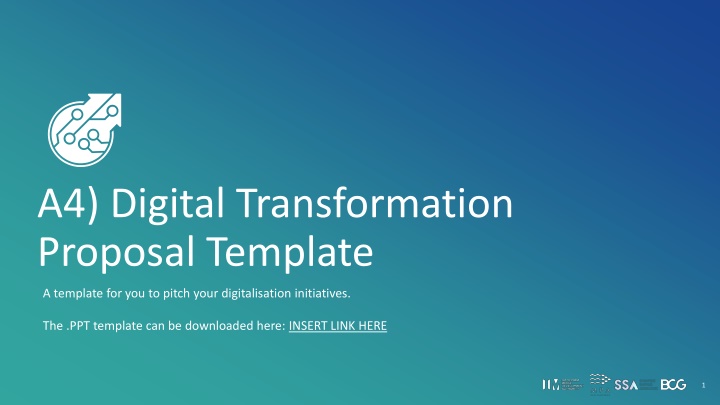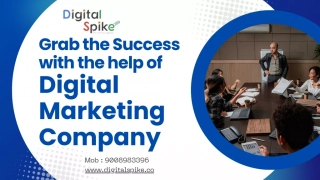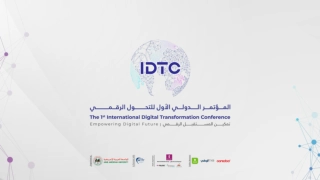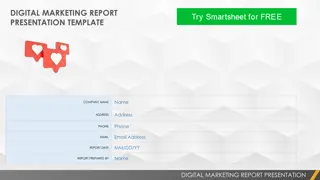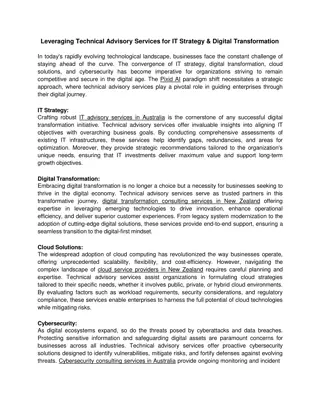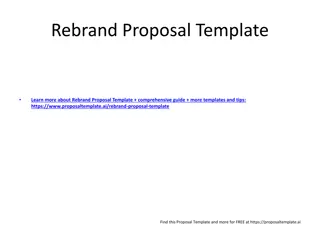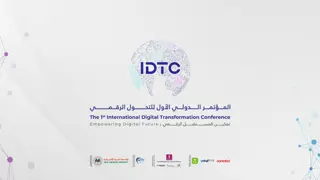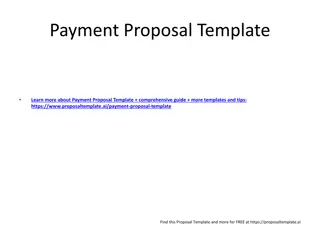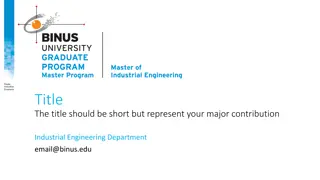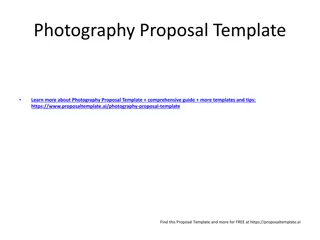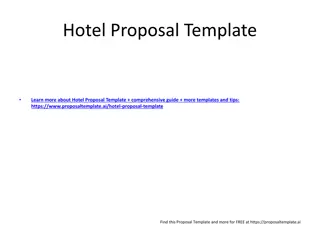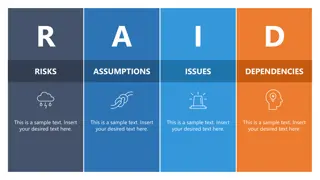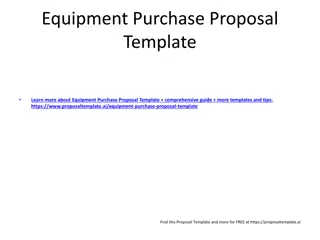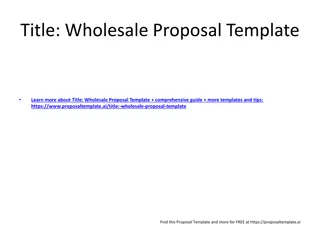Digital Transformation Proposal Template for Company Initiatives
Pitch your digitalization initiatives with this comprehensive proposal template. Seek approval for strategic projects, outline key reasons and areas of focus, summarize enablers required, project financial metrics, risks and mitigation, and immediate actions post-approval.
Download Presentation

Please find below an Image/Link to download the presentation.
The content on the website is provided AS IS for your information and personal use only. It may not be sold, licensed, or shared on other websites without obtaining consent from the author.If you encounter any issues during the download, it is possible that the publisher has removed the file from their server.
You are allowed to download the files provided on this website for personal or commercial use, subject to the condition that they are used lawfully. All files are the property of their respective owners.
The content on the website is provided AS IS for your information and personal use only. It may not be sold, licensed, or shared on other websites without obtaining consent from the author.
E N D
Presentation Transcript
A4) Digital Transformation Proposal Template A template for you to pitch your digitalisation initiatives. The .PPT template can be downloaded here: INSERT LINK HERE 1
0. Executive summary "We are seeking [x]'s approval for [S$x] across [x months/years] to implement [x] " Highlight (or recap) company vision and target 1 "The key reason for driving this project is [x]; this is in line with the findings in DAI 2020" Outline areas of focus, supported by DAI self-assessment 2 "Fundamentally, the product is a [x], which operationally upgrades our processes via [x]" Summarise the initiatives and their respective benefits 3 "This project will require [x] FTEs across a period of [x months/years], across [x phases]" Summarise the enablers required and how to build them 4 "The full capital outlay is [S$x]. We project a full realization of our investments by year [20xx]" Reiterate the key financial metrics 5 "If we do this project, the major risks are [x]. [x] will be put in place to mitigate this risk" Highlight key risks and mitigating measures in place 6 "Further to approval, we will engage [x], with the projected slated to start in [x]" Note immediate actions required 7 2 2
1a. Vision Powered by digital innovation, [x] will be a leading [x] provider in Singapore, having [x] customers and a profit margin of [x] by [202x] 3 3
1a. Vision Potential categories to consider: Customer needs and pain points Are customers asking for this solution? Do they face a common issue in current services? Is this a complementary solution that could bring new revenues? Efficiency- or cost- driven needs Could this solution significantly increase productivity (e.g. free up time from laborious processes)? Are there clear cost- savings to be derived if this solution is implemented? Talent and manpower driven Will this solution provide a workplace environment that could attract more new talent? Could this solution automate a task whereby hiring is challenging? Regulatory requirements Are there new rules that require us to implement this solution (e.g. emissions or cybersecurity regulations)? Integration with ecosystem Are we able to benefit from the rich port ecosystem by implementing this solution? (e.g. JIT1, MSW2, startup ecosystem, etc.) 4 4 1. Just-In-Time (JIT); Maritime Single Window (MSW)
1b. Initiatives Choosing what to start on (1/3) 2020 WHY BUSINESS STRATEGY DRIVEN BY DIGITAL 49 SME Vision Ambition Priorities & alignment Roadmap 100 66 100 66 DIGITIZE THE CORE NEW DIGITAL GROWTH Customer offer & Go-to-market Operations Support functions New digital services/ products 33 E2E customer journeys 0 WHAT Digital supply chain Corporate center Dimensions that we are scoring low in currently are Research and product development33 33 Degree of digital disruption 33 0 0 Digital marketing Shared services & centers of excellence Procurement Lighthouses & prototyping 33 0 Personalization 33 100 66 Next-generation sales 33 Start-up incubation, VC, M&A Service operations Customer services 0 0 33 100 Digitally driven pricing 0 0 [Dimension X] [Dimension Y] [Dimension Z] Leadership & culture Data strategy World Class Tech Function 66 66 66 Digital ecosystem go to market Organization & governance 66 HOW 33 Data governance Digital delivery (DevOps) 33 33 Skills & people 66 Digital ecosystem operating model Artificial intelligence Internet of Things 33 66 Agile@Scale 33 33 Digital transformation accelerator Digital & data platforms Digital & data platforms Cybersecurity Cybersecurity 33 CHANGING WAYS OF WORKING LEVERAGING THE POWER OF DATA & TECHNOLOGY INTEGRATING ECOSYSTEMS Digital starter Digital literate Digital performer Digital leader DAI 0-8 9-17 18-24 25-33 34-41 42-49 50-57 58-65 66-74 75-82 83-91 92-100 N/A 5 5
1b. Initiatives Choosing what to start on (2/3) TARGET STATE WHY BUSINESS STRATEGY DRIVEN BY DIGITAL 80 SME Vision Ambition Priorities & alignment Roadmap 100 66 100 66 DIGITIZE THE CORE NEW DIGITAL GROWTH Customer offer & Go-to-market Operations Support functions New digital services/products 42 E2E customer journeys Dimensions that we are setting a high target for in the next three years are 100 WHAT Digital supply chain Corporate center Research & product development 33 63 63 Degree of digital disruption 57 Digital marketing Shared services & centers of excellence Procurement Lighthouses & prototyping Personalization 63 100 100 76 Next-generation sales 53 Service operations Customer services Start-up incubation, VC, M&A 100 63 100 Digitally driven pricing 35 [Dimension X] [Dimension Y] [Dimension Z] Leadership & culture Data strategy World Class Tech Function 66 66 66 Digital ecosystem go to market Organization & governance 66 HOW 33 Data governance Digital delivery (DevOps) 33 33 Skills & people 66 Digital ecosystem operating model Artificial intelligence Internet of Things 33 66 Agile@Scale 33 33 Digital transformation accelerator Digital & data platforms Cybersecurity 33 CHANGING WAYS OF WORKING LEVERAGING THE POWER OF DATA & TECHNOLOGY INTEGRATING ECOSYSTEMS Digital starter Digital literate Digital performer Digital leader DAI 0-8 9-17 18-24 25-33 34-41 42-49 50-57 58-65 66-74 75-82 83-91 92-100 N/A 6 6
1b. Initiatives Choosing what to start on (3/3) Priority grid by dimensions1 Sample Gap to target maturity state2 High Business strategy driven by digital Changing ways of working 3. 6. 1. 8. 21. Leadership & culture 22. Organization & governance 23. Skills & people 24. Agile@Scale 25.Digital transformation accelerator 1. Vision 2. Ambition 3. Priorities and alignment 4. Roadmap 16. 26. 20. 27. 30. 28. 35. 18. Leveraging the power of data & technology Digitize the core 9. 2. 29. 7. 5. E2E customer journeys 6. Research & product development 7. Digital marketing 8. Personalization 9. Next-generation sales 10. Digitally driven pricing 11. Digital supply chain 12. Procurement 13. Service Operations 14. Corporate center 15. Shared services & centers of excellence 16. Customer services 26. Data strategy 27.Data governance 28. Artificial Intelligence 29. Digital & data platforms 30. World Class Tech function 31. Digital delivery (DevOps) 32. Internet of things 33. Cybersecurity 21. 23. 32. 31. 33. 4. 14. 5. 11. 24. 10. 19. 22. 34. New digital growth Integrating ecosystems 12. 17. New digital services/products 18. Degree of digital disruption 19. Lighthouses & prototyping 20. Start-up incubation, VC, M&A 34. Digital ecosystem go to market 35. Digital ecosystem operating model 15. 25. 13. 17. Low Importance In the next [x] years, it is crucial that we focus on [x] in line with priority dimensions of our DAI diagnosis in the top right quadrant Low High Priority dimensions 1. Provided in the giveback pack by IMDA, based on self-reported survey answers of each organisation 2. Determined by gap between current digital maturity and target state of organisations in three years Source: IMDA DAI assessment 7 7
1c. Enablers Understanding what is needed for chosen initiative Priority grid by dimensions1 Sample Gap to target maturity state2 High Business strategy driven by digital Changing ways of working 3. 6. 1. 8. 21. Leadership & culture 22. Organisation & governance 23. Skills & people 24. Agile@Scale 25.Digital transformation accelerator 1. Vision 2. Ambition 3. Priorities and alignment 4. Roadmap 16. 26. 20. 27. 30. 28. 35. 18. Leveraging the power of data & technology Digitize the core 9. 2. 29. 7. 5. E2E customer journeys 6. Research & product development 7. Digital marketing 8. Personalization 9. Next-generation sales 10. Digitally driven pricing 11. Digital supply chain 12. Procurement 13. Service Operations 14. Corporate center 15. Shared services & centers of excellence 16. Customer services 26. Data strategy 27.Data governance 28. Artificial Intelligence 29. Digital & data platforms 30. World Class Tech function 31. Digital delivery (DevOps) 32. Internet of things 33. Cybersecurity 21. 23. 32. 31. 33. 4. 14. 5. 11. 24. 10. 19. 22. 34. New digital growth Integrating ecosystems 12. 17. New digital services/products 18. Degree of digital disruption 19. Lighthouses & prototyping 20. Start-up incubation, VC, M&A 34. Digital ecosystem go to market 35. Digital ecosystem operating model 15. 25. 13. 17. Low Importance We will ensure that we are equipped with enabler(s) [x] to accomplish our initiatives Low High Priority dimensions 1. Provided in the giveback pack by IMDA, based on self-reported survey answers of each organisation 2. Determined by gap between current digital maturity and target state of organisations in three years Source: IMDA DAI assessment 8 8
1b. and 1c. Detailed description of initiative and enablers required Introduction to the product or solution [Dummy text to be included] [Dummy text to be included] [Dummy text to be included] Brief introduction & history of the initiative What is the underlying technology? Who will use the product? (e.g. internal use, clients, ) Measurable benefits of the product [Dummy text to be included] [Dummy text to be included] [Dummy text to be included] Outline the key benefits and tie back to DAI dimensions Make benefits measurable e.g. "the solution is projected to reduce error from XX% to XX%, saving $XX Enablers required & impact to current processes [Dummy text to be included] [Dummy text to be included] [Dummy text to be included] Describe enablers required and what is needed to set them up Outline changes in processes; consider using a process/flow chart to describe the changes Success stories globally [Dummy text to be included] [Dummy text to be included] [Dummy text to be included] Alleviate "fears" by showing proof that others have done it and more so if they have done it well! 9 9
2. Implementation Plan Project will span [x weeks] from [x] 2020 2021 Activity Q1 Q2 Q3 Q4 Q1 Q2 Q3 Q4 Activity 1 1x Project Manager 1x Data Scientist 2x Programmer Activity 2 Activity 3 Activity 4 Activity 5 1x Project Manager 1x UI/UX Designer 2x Programmer Activity 6 Legend Activity 7 Phase 1 Phase 2 Phase 3 Key updates Activity 8 Activity 9 Activity 10 Update to broader team 10 10
3. Financials [xx] capital required; breakeven in [x] Financial impact (SGD '000) 50 Initiative will be profitable in [month and year] 0 Initiative will cost [$X] in [year] -50 Initiative will breakeven on initial investment in [month and year] -100 2020 2021 2022 2023 2024 2025 CAPEX investment Profit/loss Cumulative profit / loss 11 11
4. Risks and mitigants We recognize the following risks and have developed mitigation plans for them Potential categories to consider: Product risk People risk Operational risk Market risk Reputational risk Could there be issues of poor adoption, poor quality, late delivery, etc.? Can this be mitigated by customer validation, customer testing, phased releases, etc.? Could there be a lack of talent to operate the new software? Can this be mitigated by having the internal team work hand-in-hand with vendor, easing change mgmt.? Could there be technology/cyber incidents, malfunctions, etc.? Can this be mitigated by backup/contingency plans, cybersecurity solutions, etc.? Could there be an economic downturn, reducing projected gains? Can this be mitigated by incorporating the possibility of downturn in financial assumptions? Could there be public backlash in the event of a breach of data? Can this be mitigated by an escalation plan / social media response in such events? 12 12
5. Immediate actions required Potential categories to consider: Shortlist and select vendors (and if applicable, issue RfPs1, RfQs1, etc.) Finalize commercial/technical discussions with said vendors Procurement Identify funding support channels and submit funding applications Engage financial institutions (e.g. bank) to obtain funding Plan with internal teams to draw down organisation funds Funding Socialize and seek support from relevant teams within organisation If applicable, seek regulatory guidance from MPA Engagement Seek advisory or consultancy services Seek project management support If applicable, seek mentorship through an accelerator (e.g. PIER71) Advisory and Project Management Conduct customer interviews to validate pain points Refine product specifications through market testing Product Development and Research 13 13 1.Request for Proposals 2. Request for Quotations
